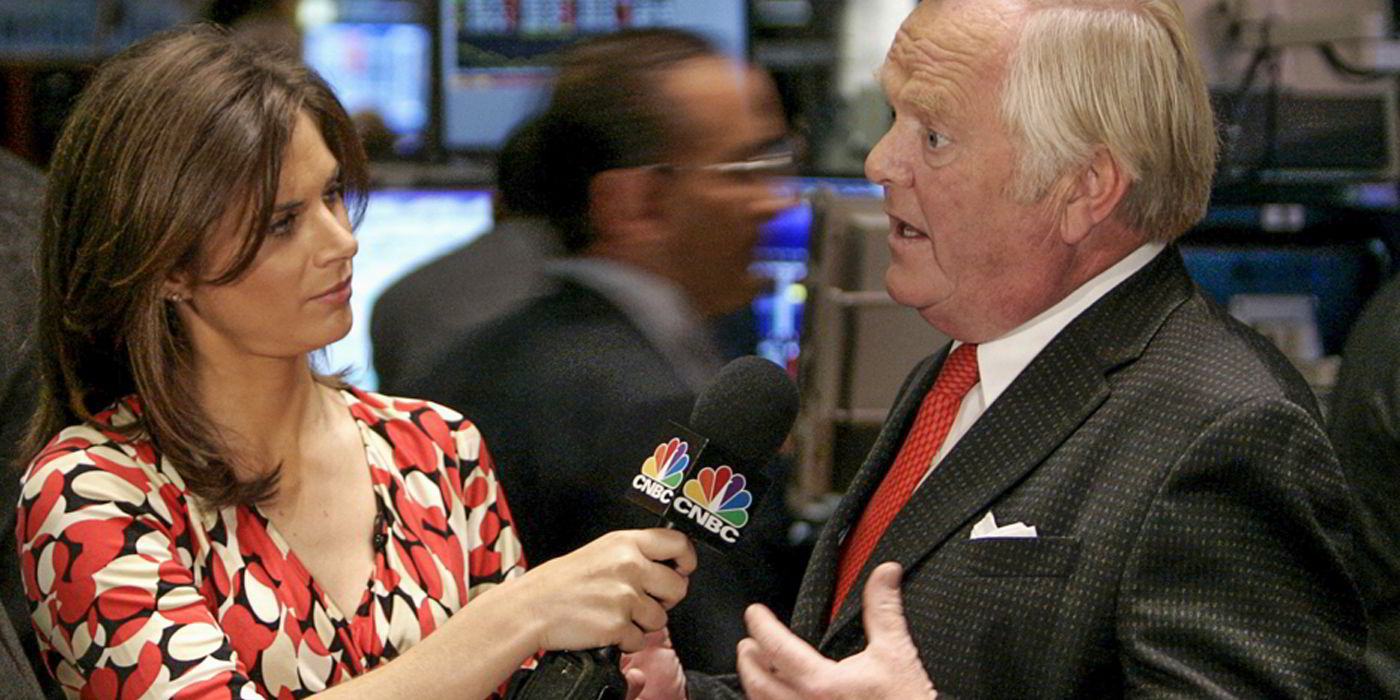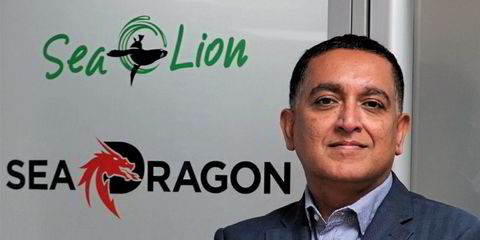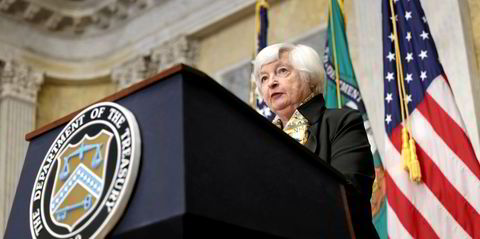Robert Bugbee’s father-in-law phoned him a decade ago from the tiny US state of Delaware, inquiring about another shipping executive soon to speak in his neighbourhood.
A man named Herbjorn Hansson was expected at the Wilmington retail branch of Morgan Stanley to advise a bunch of “mom and pop” investors on why they should buy his stock: Nordic American Tankers (NAT).
To Bugbee, the story explains a lot about why NAT maintains a retail investor base that is the envy of the industry, a share price that always beats its net asset value and an ability somehow to defy conventional wisdom, periodic criticism and perhaps gravity itself.
“You have to understand, here he is, about to sit down with three or four local salesmen and their clients, and he’s in the middle of nowhere,” says Bugbee, president of Scorpio Tankers and Scorpio Bulkers. “That’s Herbjorn. He has really put the miles in. He has spoken directly to every retail salesman he can, everywhere he can and at every opportunity he can.
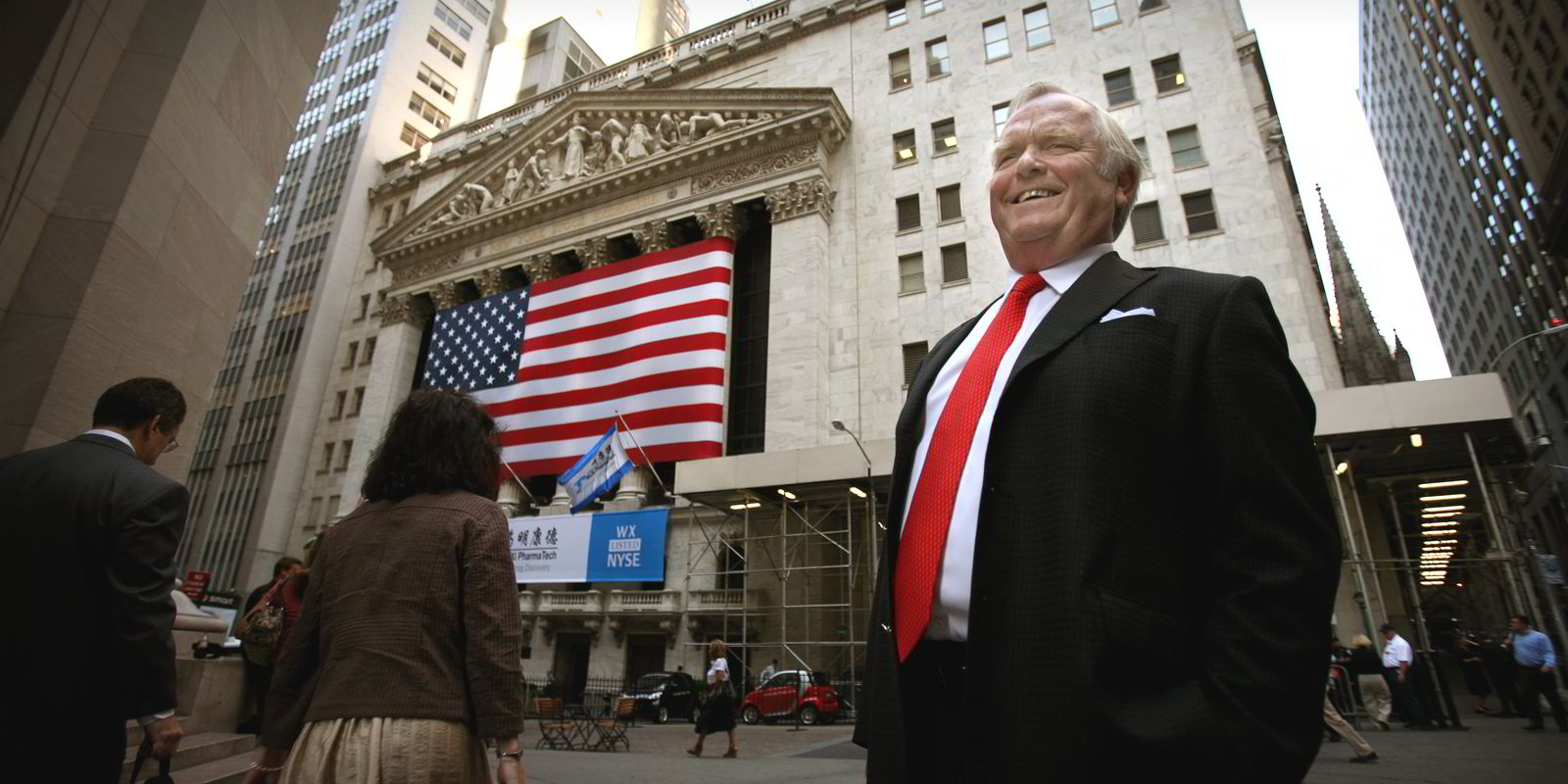
“He never goes to conferences — never at financial conferences, investment conferences. His entire time is spent communicating directly with his retail shareholder base, which in turn is incredibly loyal. He hasn’t gotten where he is by luck. It’s been a lot of hard work.”
There was even a postscript to Hansson’s Delaware visit. “The broker also ran my wife’s account and at the end of the month we realised he had bought NAT stock for her, too,” Bugbee adds.
If Bugbee’s words sound like high praise from another shipowner — particularly a former competitor in the suezmax market — consider what Hansson has been able to do on the financial side of his business. A company whose business model many predicted couldn’t last has not only survived but thrived. At the time of writing it was trading at 191% of net asset value against an average of 89% for its tanker peers, according to figures from Clarkson Platou Securities analyst Omar Nokta.
Higher-profile companies such as Frontline (112%), Teekay Tankers (94%), Euronav (86%) and DHT Holdings (70%) can only envy the premium valuation investors assign to NAT.
Tanker owners have complained for the past year that, despite a proven recovery in the crude oil market, investors are failing to give them their due in public share prices.
Hansson and NAT have rarely had that problem and do not have it now.
Most owners court buy-and-hold institutional investors such as Fidelity and Neuberger Berman, though of late they have been more likely to end up with hedge funds and others with a shorter attention span.
NAT seems to care little about the institutions, instead pursuing the retail crowd — everything from the small investor to pension funds and high-net-worth individuals. It is the most widely traded stock in the sector, with an investor base that doesn’t act like those of other tanker companies.
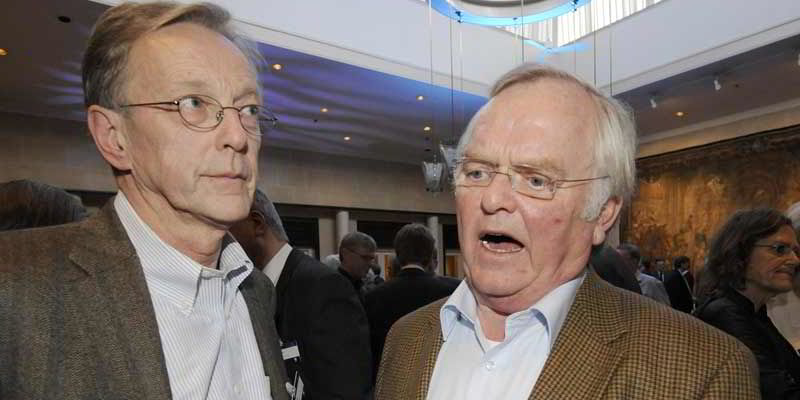
“Retail investors see higher [tanker] rates and they know that leads to higher earnings, which means higher dividends, so they buy the [NAT] stock,” says Evercore ISI analyst Jonathan Chappell, who has long covered the company.
“The hedge funds that own these other companies see the higher rates too, but they’re worried about China and they’re worried about oil prices, so they’re wary. It’s why companies owned by a retail investor base lately have outperformed those owned by professionals.”
It’s all heady stuff for a shipowner from the sleepy Norwegian coastal town of Sandefjord, and a company that was supposed to shut down in 2004 once it finished its initial mission: bareboat chartering three suezmaxes to BP for seven years.
The unsinkable Hansson quite simply has done things his way. And if some people snipe that his fleet isn’t the greatest or the newest, his commercial connections are nothing special and his operating results hardly the equal of what he’s managed in share valuation, the answer seems to be: “So what — investors don’t care.”
Hansson did not respond to requests from TW+ to comment for this story, but what he thinks about NAT is no secret, given his frequent guest appearances on television financial shows, his quarterly letters to shareholders and earlier print interviews.
He summarised the company’s strategy in a shareholder letter last June as follows:
Expansion of a homogeneous fleet
The payment of a dividend every quarter Limited debt and a strong balance sheet Maintenance of a top-quality fleet Aligned interests between shareholders and management A low cash break-even point through effective management.
The list could be boiled down further to three points: the dividend, which pledges a high percentage of NAT’s free cash flow; low debt; and a pure play on the suezmax spot market. They have been the three engines driving its performance since 2004.
NAT has paid a dividend for 74 consecutive quarters. That equates to 18 years, beginning in 1997: Bill Clinton was president in the US, Jacques Chirac in France and Tony Blair freshly elected in the UK.
NAT began operations with no net debt and has often operated near that level, financing most of its fleet expansion through retained cash and equity issues. It ended 2015 with a 22% debt-to-capitalisation ratio, against a peer group average of 47%, according to Chappell.
All 24 of NAT’s tankers on the water are spot-trading suezmaxes.
Long-time tanker executive Morten Arntzen joins Bugbee in praising Hansson for setting up and sticking with the model. He also points out a few weaknesses.
“It was Herbjorn who had the vision to convert a closed-end vehicle to a perpetual-life company. It was a bold move at the time and you have to give him credit,” says Arntzen, chairman of Danish chemical-carrier owner Team Tankers.
“Give him credit for recognising that having a pristine balance sheet has value, and investors should and perhaps will pay for it. Give him credit for being the first owner, with John Fredriksen, to stress paying out a dividend based on earnings, before the dividend model was popular.

“Give him credit also for developing the most widely held shipping company, with a great retail shareholder base that any of the other public companies would love to have.
“Rightly or wrongly, public shareholders have preferred a simple story, focused on one operating segment. He has a clear, simple story to tell. He has a stock price that goes up and down with the shipping cycle, but it maintains a premium to everyone else that has proved sustainable.”
So what’s not to like?
“The problem he has from the standpoint of an investor is that it’s very difficult to stay in the commodity markets forever and deliver the best returns — you have to be ready and willing to do what Craig Stevenson and Robert Bugbee did with OMI Corp [in 2007] and sell the company,” Arntzen says.
“To get the greatest returns, you periodically have to sell your company. But this company trades at a huge premium and all it has is steel. They have no special commercial, chartering and oil company relationships.
“They have steel that trades at two times net asset value and no other shipowner is going to pay them a premium for it. Herbjorn has a great currency, but he can’t use it with anybody.”
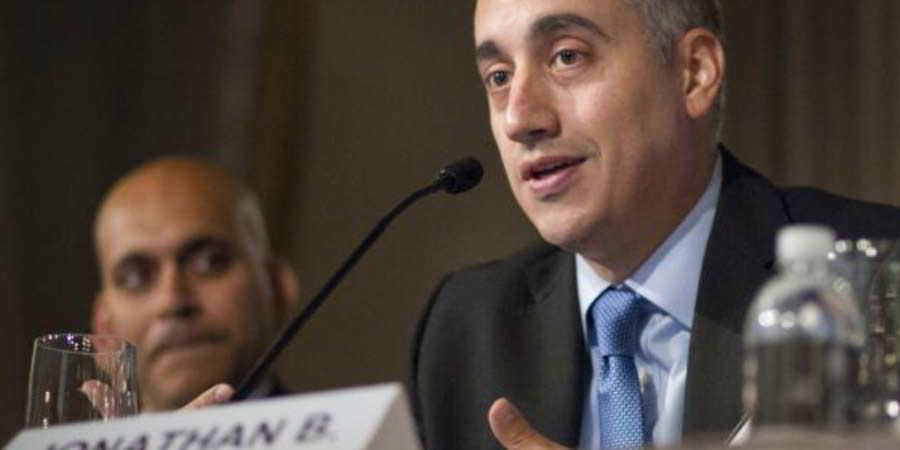
Others point out that the flip side of this question weighs against NAT as well. Its low-debt, high-payout framework can work in growing or renewing the fleet slowly and incrementally, but NAT could not swallow a fellow owner without junking the prized model.
And about that fleet. Even with Hansson’s assurances about quality and maintenance, the average age has climbed to around 13 years. This compares with DHT Holdings at just under 10 years, Tsakos Energy Navigation (8.7 years), Euronav (eight years) and Teekay Tankers (7.6 years).
Ten of NAT’s 24 tankers were delivered in the late 1990s. “They’re almost always earning less than the suezmax benchmarks and it’s because of off-hire time associated with an older fleet,” Chappell says. “There are two or three quarters in the last four or five years when they had time charter equivalent in line [with] or better than their peers.”
Christos Papanicolaou, business development director at Connecticut-based broker Charles R Weber, confirms that the NAT ships often earn less and the older vessels can face challenges with oil-major approvals.
“Running the best ship out there is not what they’re known for. Their reputation is not stellar, it’s not bad, it’s somewhere in the middle,” he says. “It depends on the age of the vessel, but overall they’re fine.”
Papanicolaou is a Hansson sceptic turned believer overall: “He’s earning enough to keep investors satisfied. He’s not earning as much as Euronav, but nobody cares. What I’ve learned is that if you keep the dividend, investors will stick with you in good times and bad. They’re one of the most investor-friendly companies out there.”
The issue of fleet age may be somewhat overblown, maintains investment banker Wiley Griffiths of Morgan Stanley, who has handled nearly 10 equity raises for NAT over the past decade.
While Hansson knows he has a mandate to grow and renew the fleet, he will not be pressured to do it on any terms other than his own, Griffiths says.
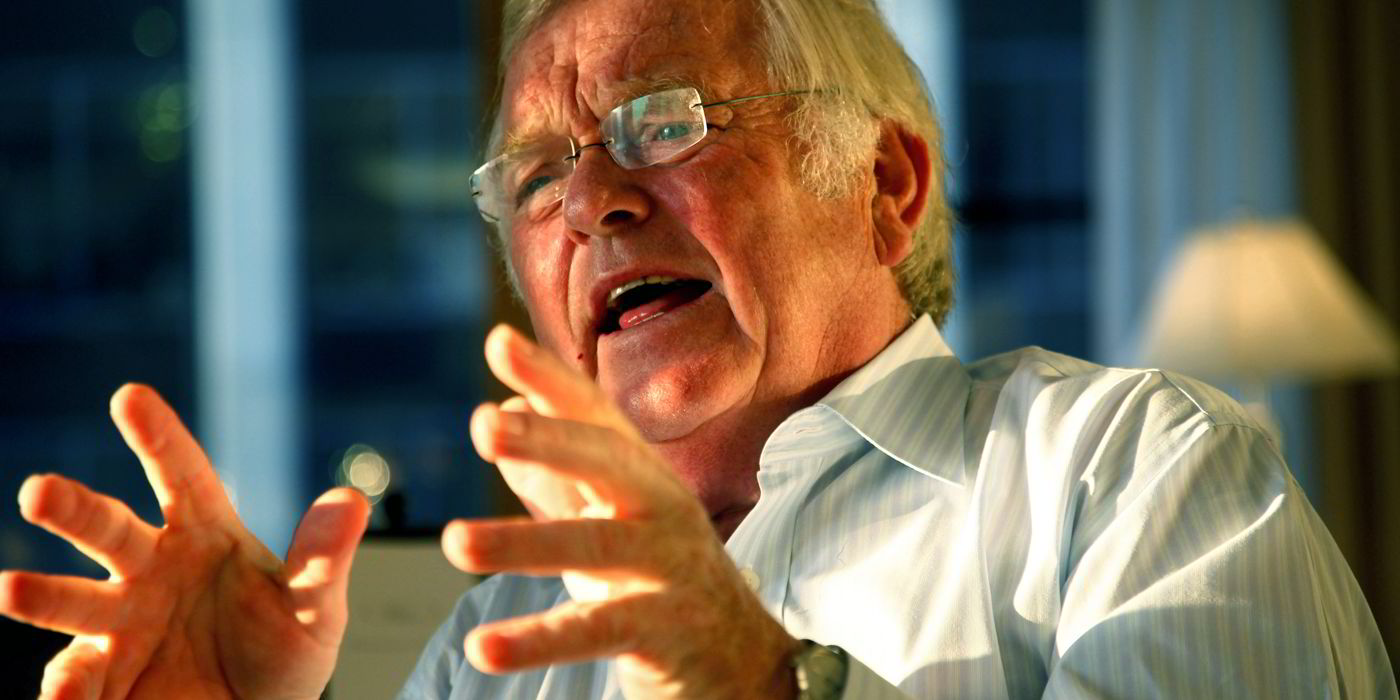
“He’s been disciplined. When you’re trading at 120% or more of net asset value, many investment bankers will tell you to issue shares and buy ships. In his case, he’s really focused on buying the right ships, not growing too quickly, and preserving the pillars of his business model. He knows you can’t issue equity too many times.
“When he looks at acquiring vessels, he’s thinking about return on investment as much as anything. So he could just as easily buy a 10-year-old ship as a one-year-old ship.”
For all the attention paid to the NAT model, the importance of Hansson himself should not be forgotten. He is the ultimate salesman and one of the industry’s true characters.
“He’s a cross between a jovial Father Christmas, Winston Churchill and the Mad Hatter,” fellow eccentric Bugbee offers.
“Father Christmas in that through thick and thin he’s come through with the dividend; Churchillian in his shareholder speeches and letters, and the fact he’s an elder statesman to the industry; and he’s like the Mad Hatter because people think what he’s doing is crazy and shouldn’t work.
“There have been many companies who have tried to follow his model. They’ve seen a momentary increase in the stock but weren’t able to maintain it. Nobody’s been able to copy the original.
“There are loads of ways that someone can criticise him, but somehow he makes it work. Rain or shine, the Mad Hatter seems to have his tea party.”
NAT’s entertainment!
Shipping’s fox on the box
“Thank you, Jim, good afternoon to you. I’m talking to you from the eastern coast of Norway, a nice evening with a lot of snow.”
So began a typical session between Herbjorn Hansson and television stock-picker Jim Cramer of CNBC’s Mad Money on 21 March 2012.
Hansson always has been about the direct approach when it comes to wooing investors to Nordic American Tankers (NAT).
Unlike other managers of public companies, he almost never does quarterly earnings calls with equity analysts and he rarely appears on the speaking circuit. But he does reach out directly in a quarterly letter to shareholders. And Hansson may be best known for his many appearances on cable TV financial shows, particularly with wild-eyed host Cramer on Mad Money.
“It’s a heavily watched show among his target retail investor base,” says long-time equity analyst Natasha Boyden. “The two of them seemed to have this bromance going on where Cramer would tout the stock and tout the stock.
“Herbjorn is a master of self-promotion, and I don’t mean that in a pejorative fashion. Self-promotion is a great thing — just look at Donald Trump. Herbjorn really gets out there and gets his message across, whether he has to smack you over the head with a hammer or be more subtle.”
It seemed to work with Cramer, who generally kept a “buy” sign on the stock. “The best CEO in the tanker business,” Cramer gushed on one occasion. “This is the only tanker stock we will endorse on Mad Money.”
Such shows can also be a platform for the Norwegian’s quirky humour and sometimes puzzling proverbs.
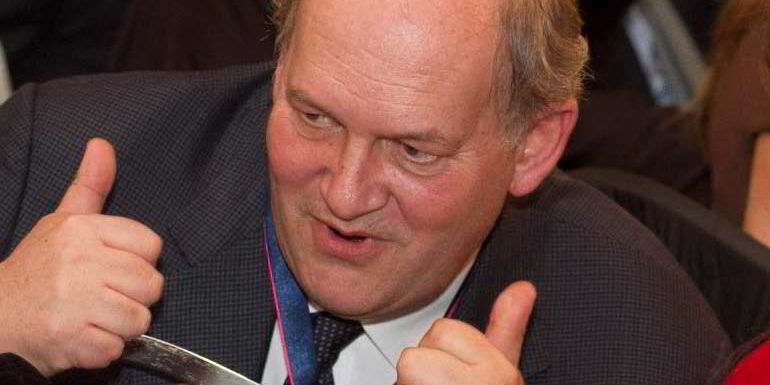
“We have the strongest balance sheet in the industry,” he told Cramer in 2009. “When others have water up to their cheek, we are barely wet on our toe.”
Then with CNBC Squawk on the Box hosts Erin Burnett and Mark Haines in 2011 he said: “But you see, we are just like the fox. We have two exits in the back of the cage. If the market is up, we make money. If the market is down, we buy cheap ships.”
Hansson added the following in a 2013 interview with TradeWinds: “You do not have to expect newbuildings from us at this time. But we may change our mind. That’s one of our best abilities, that we can change our mind. What we say today, we don’t necessarily mean tomorrow.”
Robert Bugbee of the Scorpio group says Hansson keeps a laser-like focus on his company. “More than any person I’ve ever known in the industry, he focuses only on his own company,” Bugbee says. “He lives and breathes NAT. He will only talk about NAT. He’s never drawn into a press thing commenting on other people.”
The flip side of that intense focus was seen in 2010, when Hansson blasted underwriters of an IPO by Evangelos Marinakis for purportedly making “negative comparisons” with NAT — charges the Greek owner later disputed.
“Any time I’ve ever made a comment about NAT, I will very quickly get an email from Herbjorn detailing five things that I should have added,” Bugbee says. “I can only reply: ‘Herbjorn, you obviously know NAT a lot better than I do’.”
Dividend dilemma
Hansson goes against the flow
What happens when you’ve set up a company to pay a dividend based on a high ratio of cash flow, but then the cash dries up?
It’s not a theoretical problem, it’s one Herbjorn Hansson and Nordic American Tankers (NAT) had to deal with between 2010 and 2013, when the tanker market dragged through the worst protracted trough in its history.
Management decided to pad the dividend with cash sourced from outside its regular operations. The move did not reflect best practice in corporate finance and was roundly criticised by equity analysts.
But even the critics grudgingly acknowledge today that while NAT’s approach wasn’t out of the finance textbook, it was probably the right decision and a key to maintaining the premium valuation the company enjoys today.
Beginning in the second quarter of 2010 and extending into 2013, NAT paid a dividend higher than its cash flow for 15 straight quarters, notes Evercore ISI analyst Jonathan Chappell. In six of those quarters, it had negative cash flow.
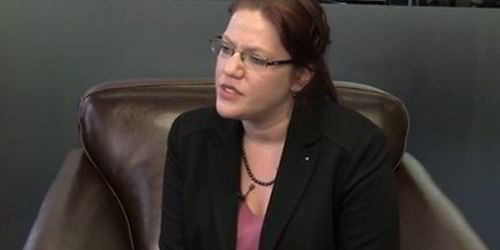
NAT also raised equity four times during that period, fuelling the impression that the fundraisers were “used to support a dividend they weren’t earning”, Chappell says.
Chappell and fellow analyst Natasha Boyden, then working for Cantor Fitzgerald and Global Hunter Securities, were critical at the time.
“In the down years they were doing a return of capital, not a return on capital,” Boyden tells TW+. “It doesn’t make much sense to me to return money in the form of a dividend that you raised in the market some months prior.”
Among those seeing the logic, however, is Wiley Griffiths, the Morgan Stanley investment banker who has guided NAT in multiple equity issues.
“What he did in hindsight was he maintained his following of yield-oriented or income-oriented investors,” Griffiths says. “He said, ‘I will continue to provide you with yield or return while I can’.
“He thought the cost of disenfranchising NAT from its core shareholders was more important than adhering to corporate finance logic.”
Morten Arntzen, a longtime banker who is now chairman of Team Tankers, adds: “In Corporate Finance 101, what he did was a no-no. But public boards and management are supposed to listen to their shareholders. His shareholder base expects a dividend from him and he delivered it. In return, they’ve continued to give him a great premium in valuation.”
But did Hansson also get lucky in that the tanker downturn didn’t last longer?
“I’ve seen several companies bailed out by the market turning up in time over the years,” Boyden says. “If he’d made that decision in the dry bulk game, it would be a very different situation.”
Since the crude recovery NAT has paid a dividend less than cash flow in six of seven quarters, and somewhat surprisingly has not raised any equity since early 2014, Chappell notes. “They’ve been more responsible with their cash for almost two years now.”
PLUS POINT
At 67, Herbjorn Hansson has nearly 45 years in shipping, with stints in the Norwegian Shipowners’ Association, Intertanko and Kosmos/Anders Jahre. He holds an MBA from the Norwegian School of Economics and attended Harvard Business School. He founded Ugland Nordic Shipping in 1989, building it into one of the world’s largest shuttle-tanker owners, and stayed on as a top manager after selling to Teekay in 2001. He left in 2004 to make NAT his full-time pursuit, having launched it in 1995, selling shares in Oslo and New York.

The proceeds paid for the acquisition of its first three suezmaxes, delivered in autumn 1997. They were fixed on seven-year bareboat charters to BP, with profit-sharing above a floor rate of $22,000 per day. BP elected not to extend the charters in 2004 and Hansson pushed to convert NAT from a closed-end vehicle to a perpetual company. He also founded Nordic American Offshore in 2013, in what now appears an ill-timed entry into the sector.
